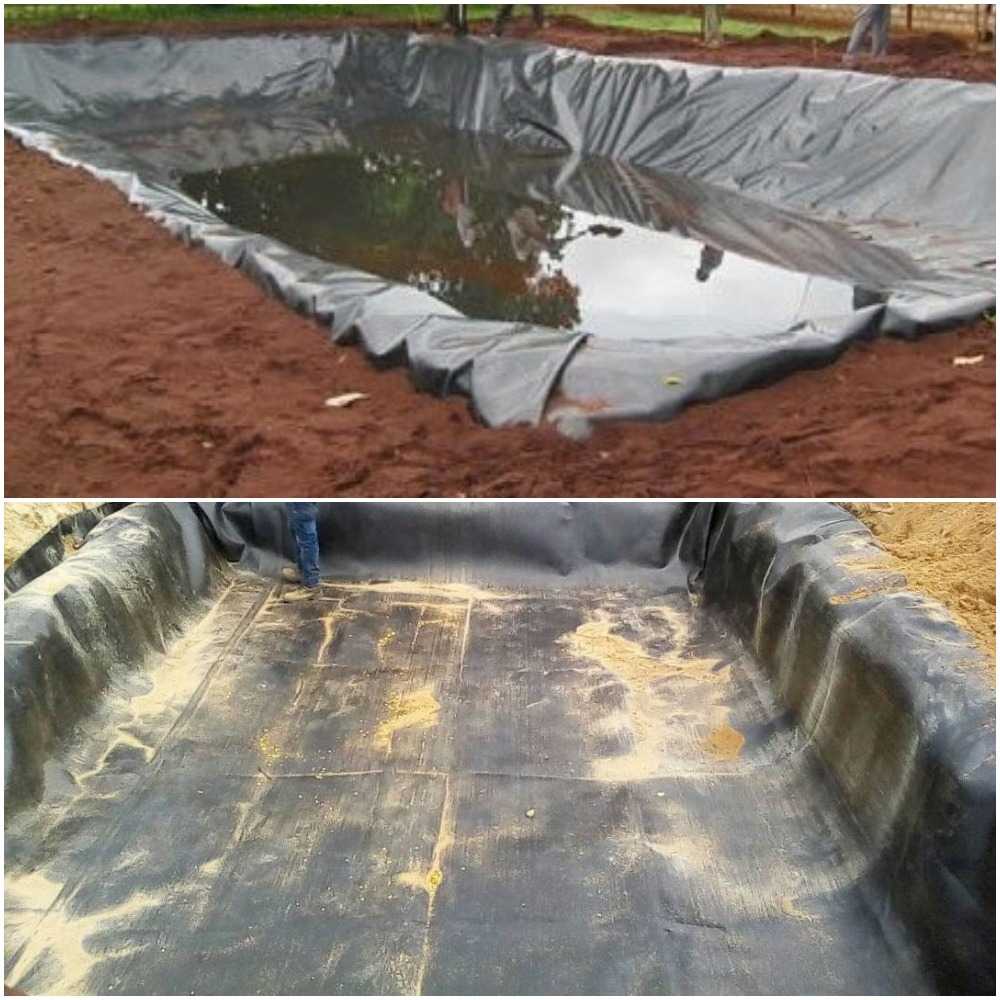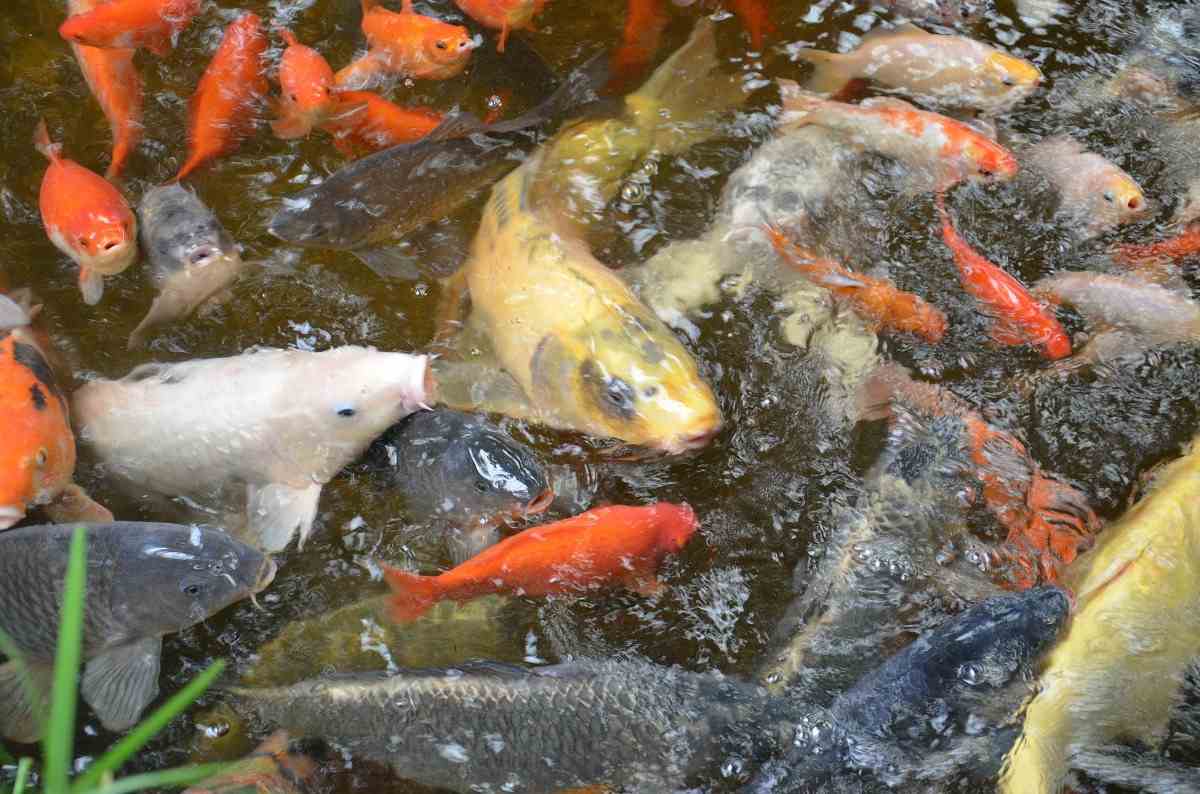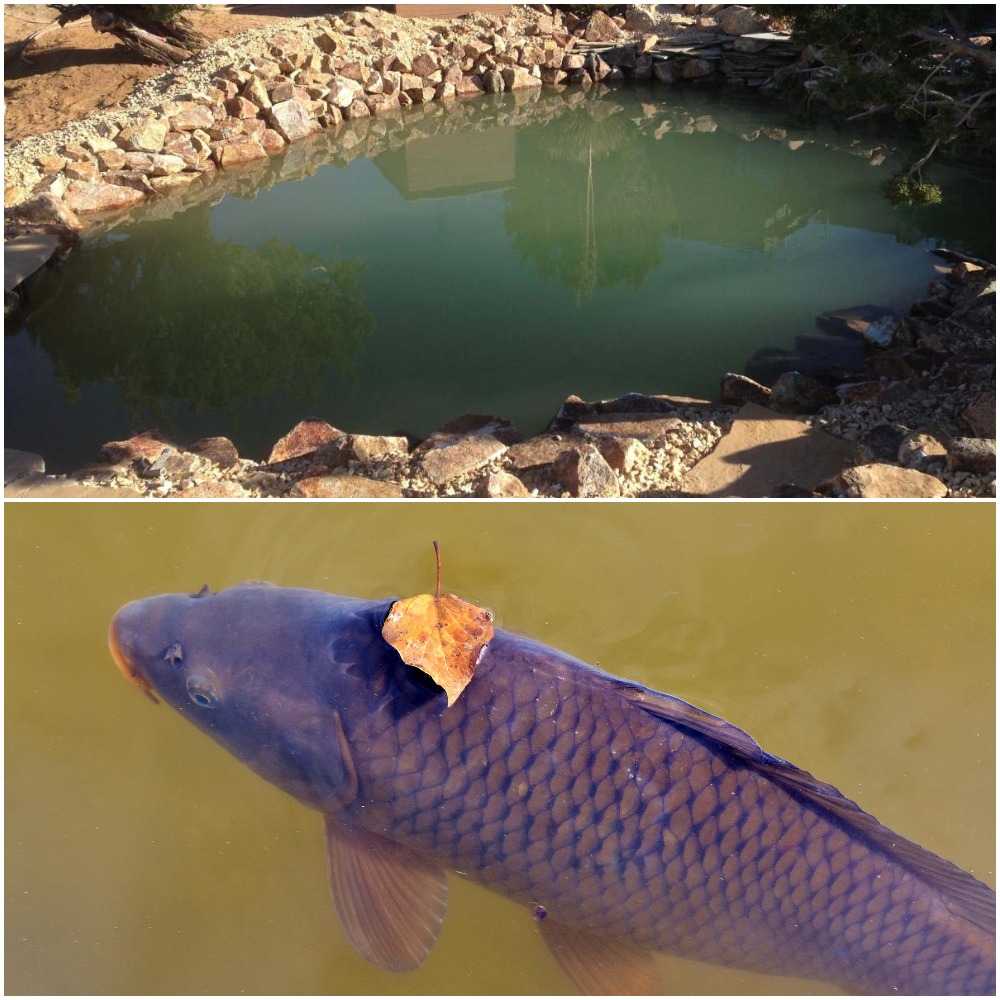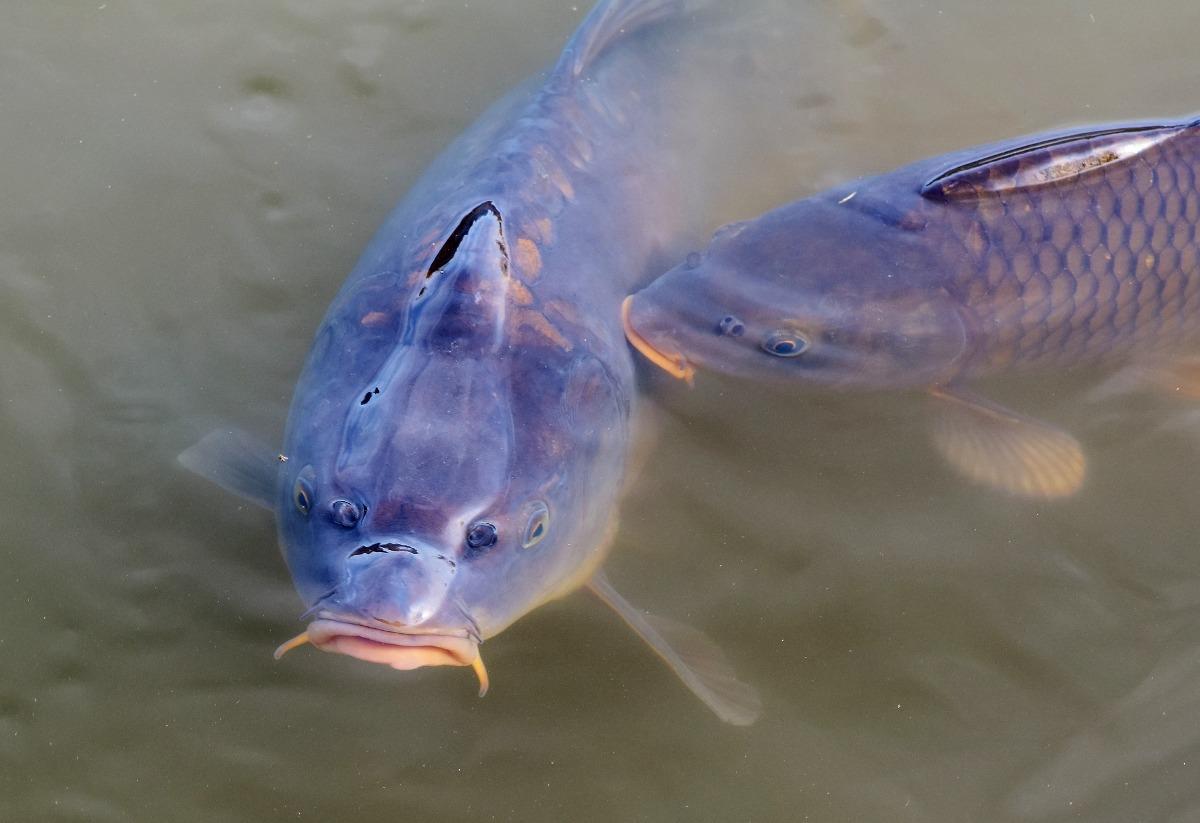Fish Pond Setup Guide: Fish farming is an old method of agriculture that produces a steady source of protein. The main requisite of fish culture is the availability of land for fish pond and quality fish seeds. A fish pond is a confined body of water where fishes are raised under controlled conditions. You can assume this information for small fish pond design, Catfish pond construction, koi fish pond construction, goldfish pond construction, Murrel fish pond construction, Tilapia pond construction, Rohu fish pond construction, and Crap fish pond construction. One must understand the fact the cost of construction of a fish pond depends on pond size, area, type of pond, and material used.
A guide to fish pond set up for beginners.
Importance of pond preparation in fish farming;
The important component of the fish farming business is to prepare a pond properly. Without the construction of a well-prepared pond, it is not possible to start any fish farming business. The importance of pond preparation in fish farming is given below;
- Aquatic plants and animals which are harmful to fish are controlled
- Cannibalistic and unwanted fishes are removed
- A healthy environment of the pond is preserved
- The optimum pH level for fish production is maintained
- Availability of the feed for the cultured fish is ensured
Private ponds and lakes can be used for recreation, fishing, hunting, boating, swimming and another type of activities. They can be used as a water source for livestock, fire protection, irrigation, and production of fish for food or sale. A pond that provides benefits and consistently produces good catches of fish is a result of proper planning, construction, and management.

Properly constructed fish ponds benefit from even a minimal level of management. The fundamental considerations for managing a pond for fishing contain;
- Proper pond construction and watershed management,
- Fish species selection and stocking,
- Determining fertility needs,
- Managing for a balanced fishery,
- Proper harvesting,
- Managing water quality and understanding fish pond dynamics, and
- Aquatic plant management.
Fish Production in Ponds
Fish ponds are constructed in areas with poor soil quality (sodic soils or marshes) at the same time water in good quantity and quality is available. Thus fish farms utilize first of all the land areas, with relatively high production (1-5 t/ha/ years). Control of this production involves the selection of the cultured fish species, their size, and age, feeding, fertilization of the pond, design of stocking, and harvest.
Site selection for fish pond setup
Appropriate site selection is one of the important factors that determine the success of the fish farm. Before the construction of the fish pond for fish farming, the water retention capacity of the soil and the soil fertility has to be taken care of because these all factors influence the response to the organic and inorganic fertilization in the farm pond. The selected site must have adequate water supply round the year for pond filling and other uses. The site must be free from pollution, industrial waste, domestic waste, and any other harmful activities.
You should not miss the Dairy Farm License in India.
Pond design for fish pond setup
Ponds must be built as large as space allows but should be a manageable size. A good size fish pond to start with is 6 m by 4 m. You can build a bigger fish pond later once you have had a good experience with a smaller one. When building your fish pond, be sure you do the following;
- The fish pond walls are sloped and the bottom has one deep end for draining.
- Slopes and the bottom of the pond must be well packed by beating down the soil with timber during construction. And this is to avoid erosion and seepage.
- Pond depth must be 0.5-1.0 m at the shallow end, sloping to 1.5-2.0 m at the drainage end.
- At the deeper drainage end, construct a collection pit where water collects before flowing out. A collection pit is useful when you drain the pond to harvest the fish.
- You should think about how high to build the walls of the pond. The walls of your pond must be high enough to stop water from overflowing over the edges. If the pond overflows, fish can escape. So the walls must be high enough to stop fish from escaping. But, the walls should not be too high. If the walls are too high they will slowly get eroded (washed away) and will fall into the pond.
Suitable pond fish species
List of suitable fish species in the pond will be given below;
- Algae eater
- Fathead minnow
- Goldfish
- Golden Tench
- Koi carps
- Rosette
- Shubunkin
- Sturgeon
- Golden orfes
- Sunfish
Digging as part of your fish pond setup
Depending on the size of the fish farm pond, you will either need;
- A large shovel, a lot of energy, and a lot of time to commit to the hard work;
- A bobcat or excavator that can handle digging up the area and the size of the fish pond.
Some of the important tips for digging a fish pond with an excavator;
- Avoid digging at the top of the hole on a downward slope and this can cause your machinery to tip forward with the weight.
- When digging the hole in the pond, dig at depths of 16 inches at a time on the outer edges and place the dirt in a pile out of the way at the back or side of the pond.
- When you’ve reached the center, start to dig deeper as this will help to make an even slope in the fish pond if you ever need to walk in it for some reason. It will help you drive the excavator in and out of the pond easier.
- Continue to stop and measure the depth of the pond to make sure it’s the right level of deepness that you are hoping to achieve.
- Take care when digging the pond. If you rush the digging process you may find that your pond won’t be even. To make the pond edges look more defined when complete, dig around the outer edge with a shovel to level it better.
Placing the pond liner as part of the fish pond setup
Once you have dug a hole in the pond, fill it up with mason’s sand and rake it smooth. Then cover the sand with a geotextile fabric. And this will protect the rubber liner which you will place on top of the fabric. Your fabric must be big enough to cover the hole you made for your pump. Fold your rubber liner lengthwise. Unfold your rubber liner starting from the center of the fish pond. Press the liner firmly with hand and feet over the center pit, and fill it with water to hold your liner in place.
You may also like the Poultry License in India.

Filling the pond with water
To ensure the liner stays in place when the fish pond is being filled you can place a decent-sized stone in the center. This could help to prevent the tarp from lifting and floating while minimal water is in the pond.
Filling up ponds may take a while depending on the size. It’s a good idea to let the water run into it from the side as this will help the tarp to conform slowly to the weight of the water. You should place some stones around the outer edge of the tarp to help prevent it from falling in as the weight of the water increases.
Once the pond is full, the weight of the water will help to keep it in place and you can set up your pump system.
Using fish culture technology, large amounts of readily available water are needed. Stocking rates are mainly based on surface acreage, not on pond volume. Deep ponds are not an asset unless they are used as storage reservoirs to fill properly constructed fish ponds. These ponds need to be only 4 to 6 feet in depth. These stocking rates currently range from 2,000 lb/acre or less up to a maximum of about 6,000 lb/acre.
Introducing fish to the pond
When introducing fish to the fish pond it’s a good idea to first let the water and any dirt residue to settle. Once ready, slowly begin to mix the pond water into the bucket water that you have fish in for 10 minutes; this will help them acclimatize to the new water pH levels.
You may also check the Cost of Tilapia Fish Farming in India.

If you are not planning to use a pump system, then you can work on introducing your fish. However, don’t forget that fish do need to have some oxygenated water to live and produce healthily. You can provide them with oxygen by placing a running hose in the pond 2 to 3 times a week for 15 to 30-minute intervals.
Don’t add all your fish at once in the pond. Start with a small amount of fish and if most of them live for the first two weeks then introduce more. If they all die within the first week, there’s something wrong with the water that needs to be addressed. One area that could need checking is the pH level. Some fish need a set pH level to survive. If the pH level is still within range, you can need to ask a fish expert on what might be the problem.
Conditioning and manuring as part of fish pond setup
Before the culturing of fish, the pond must be conditioned.
Conditioning – A layer of lime (calcium hydroxide) is spread over the bottom, for 2 weeks. Then it removes the acidity of the soil, facilitates desirable geochemical cycles and kills unwanted soil organisms. Water can be let in slowly after 2 weeks and then filled to the desired depth. The quality parameters such as temperature, oxygen content, pH, turbidity, hardness, alkalinity, and plankton growth must be checked for their optimal levels, before stocking the fish.
Manuring – After 15 days of liming, fertilization is to be done to increase the fish food organisms. Manure may be of organic or chemical nature. Organic manure can be sewage rich in nitrogenous matter, cow dung, pig dung, poultry manure and plant manure such as green manure, compost, and oil cake, etc. If the organic carbon is less, cow dung for the stocking pond is applied at the rate of 2 to 3 tonnes/ha.
The poultry manure at the rate of 5000 kg/ha is known to enhance zooplankton induction. The use of chemical fertilizers must vary according to the concentration of phosphorus and nitrogen in the soil. The standard combination of NPK as 18: 10: 4 is recommended for freshwater ponds. For a production fish pond of medium fertile soil; urea at the rate of 200 kg/ha/yr or ammonium sulfate at the rate of 450 kg/ha/yr can be applied in split up dozes, alternating with organic manure.
Various sizes of ponds fish raising
Generally, various sizes of ponds are required for the rearing of various stages of fishes;
- Nursery pond – rearing of spawn to fry period (approx. Size 4- 15 mm) for 15 days.
- Rearing pond – rearing of fry to fingerling period (approx. Size: 16-40 mm) for about 2 to 3 months.
- Stocking pond – rearing of fingerling (approx. Size 41- 150 mm) to marketable sizes/adult fishes.
In case if you miss this: Integrated Fish and Duck Farming.

Different types of fish ponds
Specific kinds of ponds are necessary for the specific life-stage development of fishes. The rectangular pond is preferred to round-shaped corners as it prevents the fish from escape during harvest time.
Within the fish farming pond system, there can be different pond components such as nursery, rearing, production, segregation, and breeding or spawning ponds. The area percentage of these ponds in a fish-farming can be;
- Nursery pond – 3%
- Rearing pond – 11%
- Production pond – 60%
- Segregation pond – 1%
- Breeding pond – 25%.
Here we discussed different types of ponds for fish farming;
Nursery Pond
These types of ponds are larger ponds for newly hatched fry. Usually, it is about 15 x 15 x 1.2 m and is seasonal which dries up during summer.
Spawning Pond
This pond is small in which brood fish are placed for spawning. Brood fish may be placed in hapas for spawning.
Rearing pond
These are larger ponds, usually 30 x 10 x 1.25 m, and used for rearing advanced fry till they grow into fingerlings. They can be seasonal or perennial and have a gentle slope to facilitate the netting of fingerlings.
Stocking the pond
This pond is a large perennial pond, more than 2 meters deep, and is used for the growth of fish to marketable size. The size of the pond mainly depends upon the fish species to be cultured.
In addition to the above ponds, 2 to 3 marketing ponds are also constructed on a fish farm. These ponds are used for stocking fish ready for the market. These marketing ponds are arranged in two or more parallel rows, with 1.25 m space separating them.
Fish pond fencing
The fish ponds are fenced to protect from theft. Live fences serve as a windbreak, increase fish farm diversity, provide privacy to the farm, and improve the appearance of the farm. There are some ways to make fences. These contain live fences, piled fences, woven fences, post and rail fences, wire fences, wire netting fences,s and stone walls. The wired net fence is mainly used in fish farms to stop intruders and protect the fish stock.
Leaking ponds
One of the most common fish farm pond problems is heavy water loss through leakage. The ability of the pond to retain water depends largely on the characteristics of the soil at the fish pond site. Most leaky pond problems can and prevented by cautious site selection. Before building a fish pond, be sure to test the capacity of the soil to hold water. Soils with a high clay content will minimize seepage as clay particles tend to swell when wet and, provide a good bottom seal.
- If the soil has more clay in it, no special sealing is required.
- If the bottom is sandy, it must be sealed to hold the water. To seal the bottom a clay core lining is built over the fish pond bottom.
- Another process of sealing the pond bottom is with cement blocks, but it is expensive.
- The commonly used pond sealant is bentonite clay. Bentonite is effective on sandy soils that contain insufficient amounts of clay.
- The pond liners must be covered by at least 6 inches of sand or fine soil.
That’s all folks about fish pond setup and construction ideas of the small fish pond.
In case if you are interested in this: Hydroponic Nutrient Chart.
- Economical Aquaculture: A Guide to Low-Budget Fish Farming
- 15 Common Planting Errors That Can Doom Your Fruit Trees
- How to Make Houseplants Bushy: Effective Tips and Ideas
- Innovative Strategies for Boosting Coconut Pollination and Yield
- Pollination Strategies for Maximum Pumpkin Yield
- The Complete Guide to Chicken Fattening: Strategies for Maximum Growth
- Natural Solutions for Tulip Problems: 100% Effective Remedies for Leaf and Bulb-Related Issues
- Revolutionizing Citrus Preservation: Towards a Healthier, Greener Future
- Natural Solutions for Peony Leaf and Flower Problems: 100% Effective Remedies
- Maximizing Profits with Avocado Contract Farming in India: A Comprehensive Guide
- Natural Solutions for Hydrangea Problems: 100% Effective Remedies for Leaf and Flowers
- The Ultimate Guide to Choosing the Perfect Foliage Friend: Bringing Life Indoors
- From Sunlight to Sustainability: 15 Ways to Use Solar Technology in Agriculture
- The Ultimate Guide to Dong Tao Chicken: Exploring from History to Raising
- The Eco-Friendly Makeover: How to Convert Your Unused Swimming Pool into a Fish Pond
- Mastering the Art of Delaware Chicken Farming: Essentials for Healthy Backyard Flocks
- 20 Best Homemade Fertilizers for Money Plant: DIY Recipes and Application Methods
- How to Craft a Comprehensive Free-Range Chicken Farming Business Plan
- Brighten Your Flock: Raising Easter Egger Chickens for Beauty and Bounty
- How to Optimize Your Poultry Egg Farm Business Plan with These Strategies
- Subsidy for Spirulina Cultivation: How Indian Government Schemes Encouraging Spirulina Farmers
Quite informative,thanks.
A very useful information. Thanks.